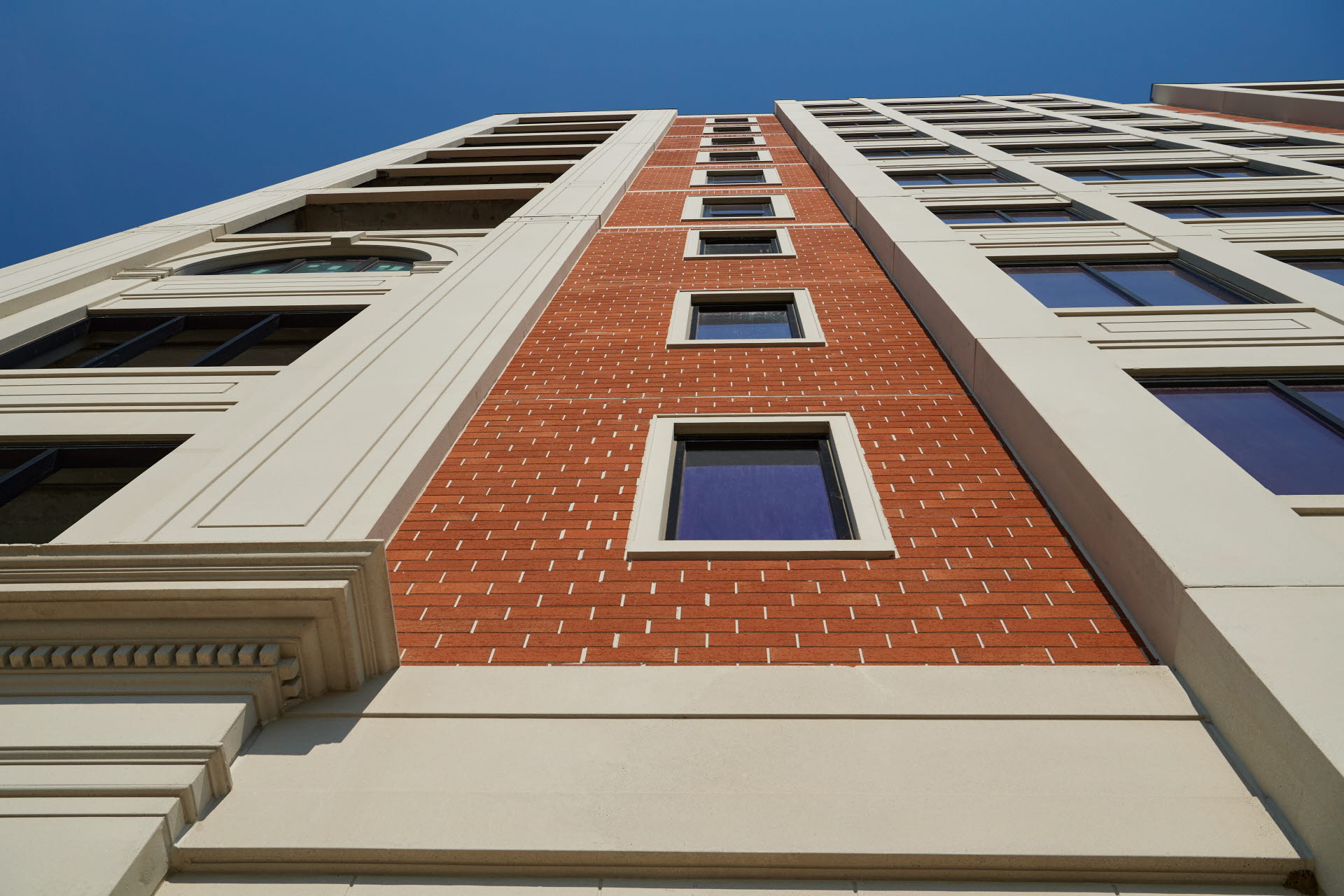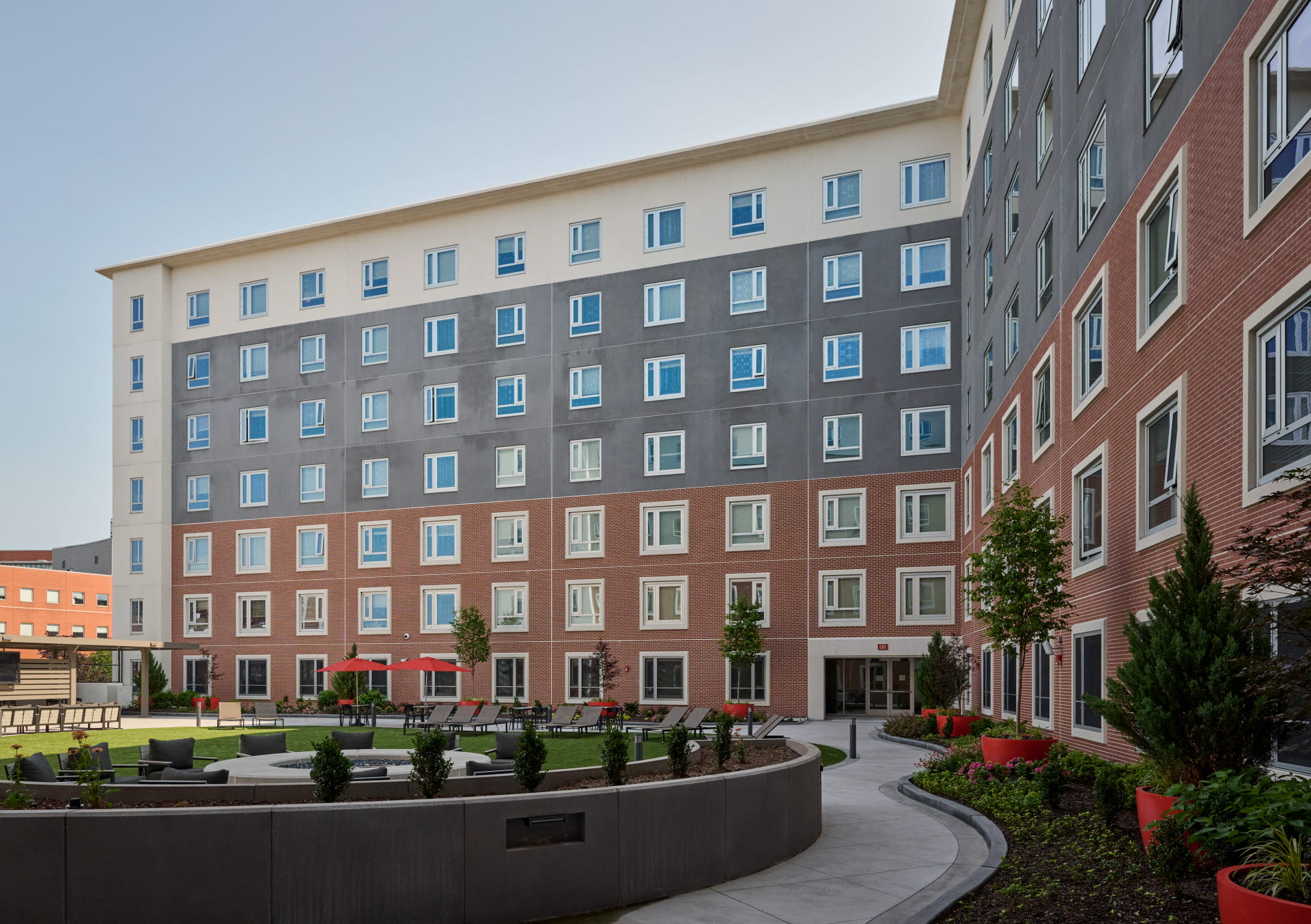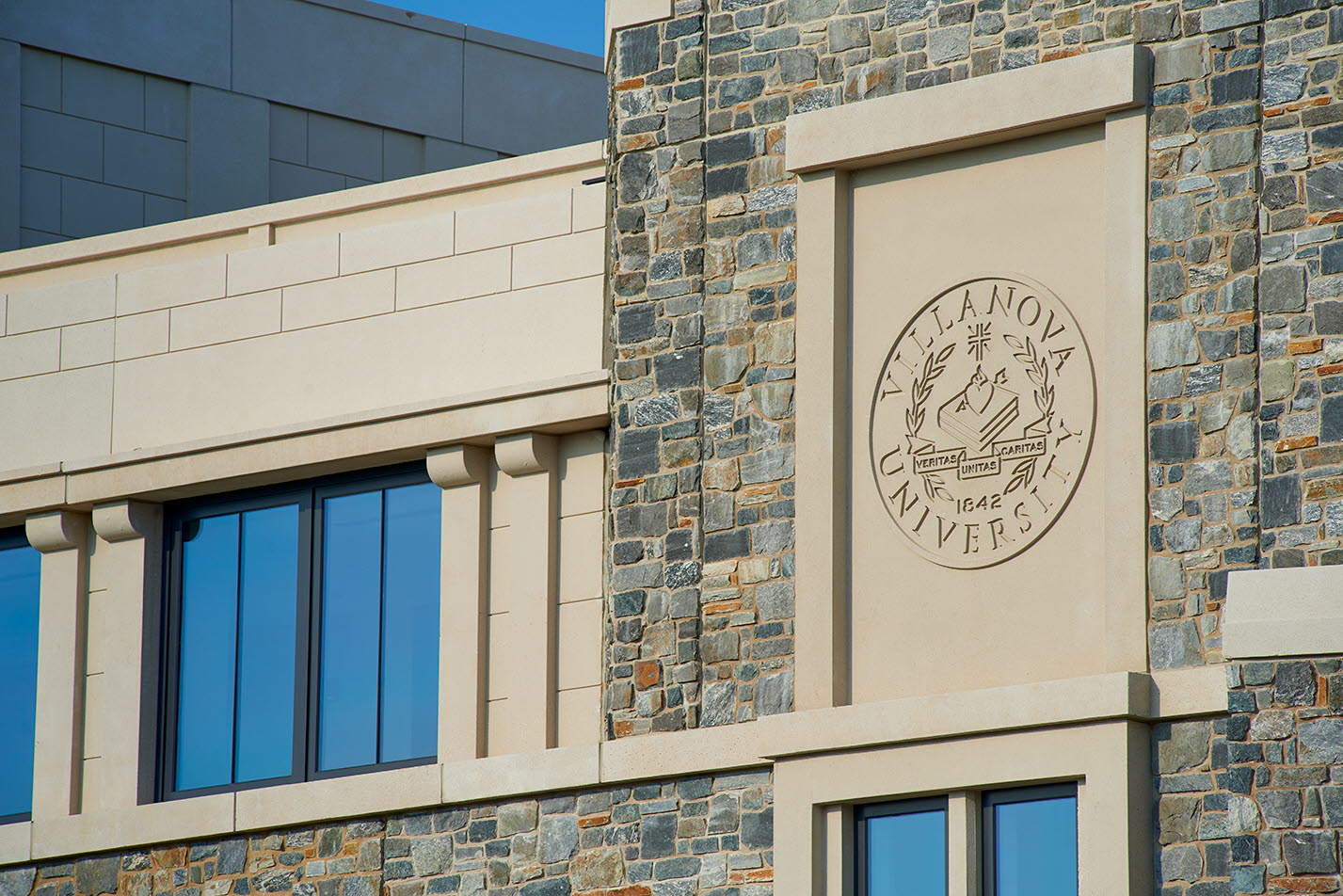Embracing Efficiency & Versatility: 6 Types of Precast Walls

Precast concrete walls are fundamental to modern construction, offering a compelling blend of structural integrity, aesthetic versatility, and rapid on-site assembly. Continue reading to discover six types of precast walls and how they contribute to a project's success from the ground up.
What Are Precast Concrete Walls?
Precast concrete wall systems offer a versatile and efficient solution for modern construction, providing a wide array of functional and aesthetic benefits. Manufactured off-site in a controlled environment, these prefabricated panels ensure high quality, expedited construction timelines, and reduced on-site waste. As a result, precast concrete wall systems are used in various industries, including:
We provide various types of precast walls and wall systems, each valuable for different design scenarios. Plus, all our architectural wall options can incorporate various concrete mixes and finishes, allowing for extensive customization (we’ll discuss more of these possibilities later in the blog).

6 Types of Precast Wall Panels
From robust structural elements to highly customizable facade solutions, understanding the distinct characteristics of each type of precast wall is crucial for optimizing design and performance in various building applications.
1. Precast Solid Walls
A precast solid wall offers significant versatility, suitable for both internal and external applications in a design. While often a feature in architectural designs, this type of precast wall can also be used in structural parking garages, particularly within stairway and elevator towers. Furthermore, precast solid wall panels vary in thickness, providing excellent thermal mass performance, exceptional durability and strength, and a wide range of aesthetic options.
2. Precast Insulated Walls
Thermally efficient, precast insulated wall panels provide a cohesive, three-layer system that combines attractive aesthetic architecture with continuous insulation and a smooth back wythe. These panels create a durable facade that requires low maintenance. Edge-to-edge continuous insulation can meet virtually any requirement. Furthermore, they enable fast and safe construction, reducing the number of trades needed and minimizing clutter on the job site.
3. Precast Load-Bearing Walls
The next type of precast wall offers both structural efficiency and economic benefits by effectively transferring roof, floor, and lateral loads to a structure's foundation. When using precast load-bearing walls, you can opt for either solid or insulated precast wall panels, depending on your specific design requirements. These panels can be used in conjunction with an alternative superstructure or as part of a total precast structure.
4. Precast Non-Load-Bearing Walls
Precast non-load-bearing walls offer the same vast aesthetic possibilities as any other precast concrete wall. Non-load-bearing walls are typically used as an enclosure system, attached to the superstructure that provides their support. They create a low-maintenance, long-lasting facade that is aesthetically diverse and boasts durable strength against various elements, including fire and wind.
5. Precast Shear Walls
Shear walls function like cantilever beams, efficiently transferring lateral forces that act parallel to the wall's face from the superstructure down to the foundation. You'll commonly find precast shear walls to be essential structural elements in parking garages or total precast structures.
6. Precast Lite Walls
Lite walls are a specialized type of precast wall panels designed for the internal support of parking structures' ramping system. What makes them unique is the strategically placed openings that allow natural or artificial light to penetrate deeper into the structure. This not only enhances visibility but also maintains the essential structural support needed. Similar to precast shear walls, lite walls effectively serve as the lateral force-resisting systems within the structure.

Types of Precast Wall Aesthetics
Precast concrete walls aren’t just about structural integrity and efficiency; they also offer an opportunity for architectural expression. From mimicking natural stone and brick to showcasing intricate sculptures and unique textures, the design possibilities with precast concrete walls are virtually limitless. Below, we’ve broken down types of precast wall aesthetics that can help bring your unique visions to life.
Colors & Textures
The final look of concrete is a direct result of the materials that go into it: aggregates (sand and stones of various sizes), cement, coloring agents (pigments), and water. By adjusting the color and size of the aggregates, the pigments, the cement color, the finishing processes, and the depth of exposure, you can achieve a vast array of colors and textures.
Different finishing techniques can also dramatically alter the appearance of concrete, even when using the exact same mix. Depending on the level of finish applied—whether light, medium, or heavy—methods like blasting, acid etching, or exposing the aggregate can make the concrete look unique.
Cast Patterns
Liquid state precast concrete is incredibly versatile, capable of being molded into virtually any desired shape. This allows for the creation of relief sculptures on the surfaces of architectural precast wall panels, featuring various shapes, motifs, and designs.
These custom-cast patterns are unique to each project and serve several purposes: they create a strong visual impact, help to reduce the perceived mass of the building, and can even convey a specific message. The color and texture/exposure of these patterns are typically an integral part of the precast concrete itself. For simpler designs, the sculptural details can be built directly into the form. However, more intricate images may require the use of a custom formliner.
Applied Veneer Finishes
There are numerous types of applied veneer finishes, including thin brick, stone, and ceramic tile, which can help structures stand out.
Thin brick veneers and glazed ceramic tile veneers are hard-faced, brick-like sections with specially molded backs designed to securely lock into wet concrete. These are cast into concrete backers, with formliners holding them in place as the panel is cast.
Stone veneers, such as granite, limestone, and marble, typically 1.5 to 2 inches thick, can be drilled, fitted with stainless steel pins, and then cast into rigid precast backers, or they are hand-set at the plant by masons before precast delivery on-site. This allows for the creation of large precast wall panels that are either fully or partially veneered.

Beyond its aesthetic and design flexibility, precast concrete is inherently resilient. It offers excellent protection against high winds, storm surge, and flying debris, along with numerous other high-performance attributes, ensuring durability and safety for your project.
Invest in precast wall systems that do the work for you. Contact our team to see how we can help you on your next project.

